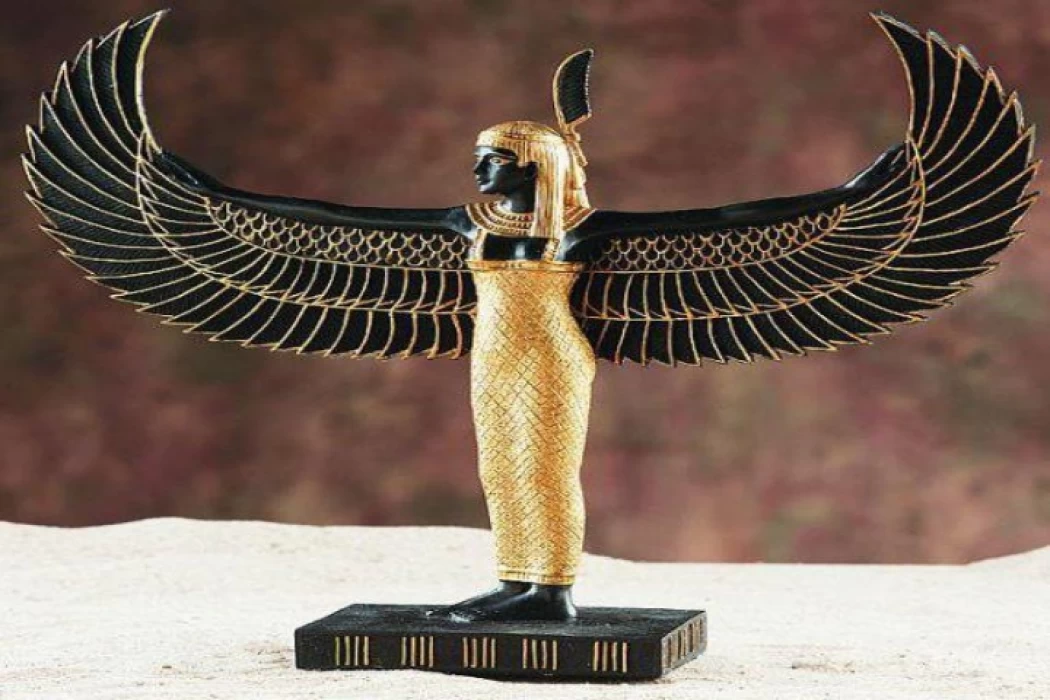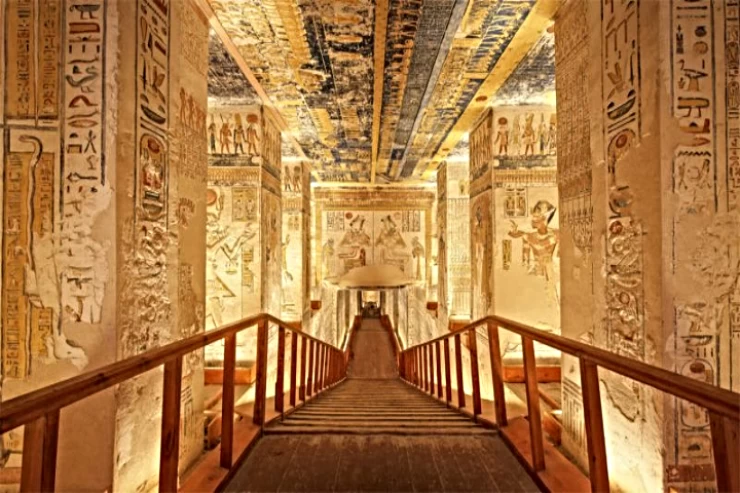
Ma'at- Explore Deities of Ancient Egypt
Maat, an ancient Egyptian goddess
In Ancient Egypt, the sacred occupies a central position in almost all facets of life from religion, culture and even common practices. The concept of sacred things in ancient Egypt was attributed to a number of factors including temples, kings and even god’s creations some of which were depicted as animals. Ancient Egyptians had a pantheon of deities for different purposes. Each of these gods possessed unique traits as well as different roles. For instance, there was a sun god known as Ra, magic and protective goddess called Isis, and the god who presided over the resurrection or life after death named Osiris.
The concept of Maat was sacred. It represented cosmic order, truth, and justice. The preservation of Maat was the responsibility of every individual and society in ancient Egypt... Worship was an important part of daily life. It took place in temples or in homes. Religious rituals were meant to honor the gods and ensure the balance of the universe.
Temples were the homes of the gods on earth and centers of worship. Some of the most famous temples are the Karnak and Luxor temples. Temples were built with elaborate geometric designs to represent both the physical and spiritual worlds. The pyramids were sacred places that were the tombs of ancient Egyptian kings and some queens, who were considered demigods. It is impossible to discuss well-known sites without bringing up the Giza Pyramids.
According to the Book of the deceased in Ancient Egypt, the deceased are actually judged at the exact time of their passing based on the weight of their hearts, known as the "Maat" scale.
The door to the other world lies in the scales of Maat, and it is easy to see how the concept of justice was central to this ancient civilization, which was very much concerned with life after death (resurrection). Maat is the goddess with the white feather, and she is also the one who holds the Ankh or Onkh - in Coptic - meaning life.
The ancient Egyptian understood under the word “Maat” many meanings and high values related to truth and truthfulness, honesty and credibility, justice and fairness, order and regularity. For them, Maat was the law of life and its proper approach, which was established by the Great God Ra for the good of mankind and the universe. All texts and archaeological evidence indicate that Maat - in simplicity and clarity - is to follow the right behavior, the right approach, and the honorable morals, for anyone who wants to walk the path of truth and virtue, or to be upright.
Maat's most important principles
- I did not commit a sin
- I did not rob others of their property by coercion
- I did not steal
- I didn't kill
- I did not steal food
- I did not embezzle offerings
- I did not steal temple property
- I didn't lie.
- I didn't snatch food.
- I did not curse
Ma`at Goddess in Ancient Egypt
Goddess Ma`at according to ancient Egyptian religion is a goddess of truth and justice, Ma`at is the daughter of Re god and wife to Thout god of knowledge Ma`at goddess represented in women form with ostrich feather above her head and holding the Ankh which means the life key and the other hand holding the mace
In the underworld of the ancient Egyptians, the heart of the dead were placed on the scales on one side and the feather of the goddess Maat on the other side. If the deceased’s heart tilted, he would enter Paradise in their beliefs, but if the feather swelled, he would enter Hell, which was represented by ancient Egyptian beliefs in the form of an imaginary predatory monster named Amamut, whose head is the head of a crocodile and his body is the body of a lion and its back is the body of a hippo. The court in the underworld consisted of 42 judges, the number of regions of Egypt, headed by Osiris.
The 42 Laws of Maat: Ancient Egyptian Society's Ethical Underpinnings The fundamental tenets of justice and morality in ancient Egypt were established by the 42 Laws of Maat.
The conception of the ancient Egyptians on Judgment Day was that Anubis would accompany the dead to the courtroom, and judges would begin to question the deceased about his actions in this world, and whether he was following the Maat (the right path) or was he among the sinners. And the deceased begins to defend himself and says: I did not kill anyone, I did not expose a person, and I did not complain about a worker with his boss, and I did not steal. I was feeding the poor, and I was given clothes to the naked, and I helped people, and I used to give the thirsty water. Then the judges began to ask him about his knowledge of the gods, so he had to mention the gods by their names and beware of forgetting one of them.
To the pharaohs, Ma'at was represented as a goddess with an ostrich feather on her head, a symbol of justice. The goddess held the key of life, Menkh, in one hand and a scepter in the other, symbolizing balance. She was credited with controlling the seasons and the movements of the planets and stars.
The Cult of Maat
While the cult of Maat was more than limited, the respect she commanded was, however, boundless. For maat (justice) was always a cornerstone of social balance. Respect among humankind, in particular, ensured a measure of salvation. A salvation that Maat would appreciate during the final judgment rendered by Osiris. "To speak according to Maat" meant to speak the truth. At the Last Judgment, the heart spoke according to Maat and could not lie. Upon death, no deceased could avoid the trial of the Last Judgment.
There, the weight of good and evil accumulated in each person's heart was calculated. Thus, the deceased who had lived with justice and kindness would be assured of having their heart compared to Maat, to their advantage. It was during psychostasis (the "weighing of the soul") that everything concerning their future in the afterlife was decided. Maat as a principle was created to meet the complex needs of the emerging Egyptian state, which embraced diverse peoples with conflicting interests. The development of such rules sought to avoid chaos, and Maat became the basis of Egyptian legislation.
The concept of "Maat" was the exact standard system for everything, which represents the basis of the world, and everything that corresponds to the purposes of the Creator deity. Hence, it is imperative for humans to preserve and approve them, and to restore "Maat" and the system to its proper condition if it is exposed to any defect or disorder.
And since the Egyptian view of the maat as the essence and material element upon which the whole world lives, and as a power for gods and for the living and the dead among humans, the "Coffins Texts" mentioned that gods live on (Maat), and the gods approved "Maat" on earth, and its approval was on The land is the responsibility of the king, who represents the gods among men, and lives like it on (Maat).
















